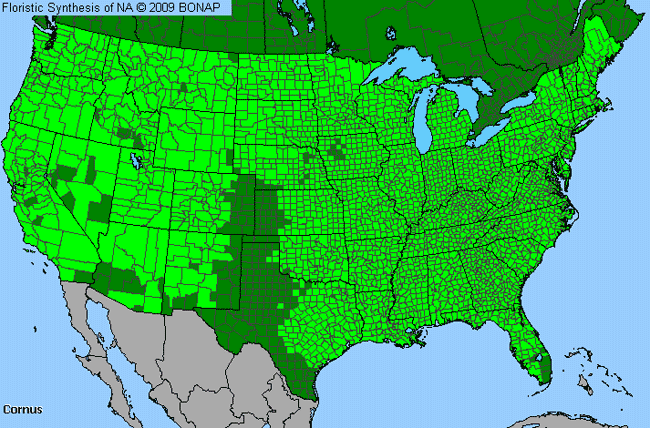Bunchberry, Dogwood (Cornus)

Bunchberry, Dogwood Genus Details

Cornus are shrubs or small trees that form thickets by proliferation from the roots. The branches are green-red and turn brown on the older wood. The leaves are opposite and the flowers are a cream to light green color. The fruit is white and one-seeded. The plants grow along river banks and lake shores to dry low open areas.
Bunchberry, Dogwood Allergy Info

Although cornus pollen has been found in air samples and patients have tested strongly positive to cornus in skin tests, the pollen is not commonly airborne. Therefore, contact with the pollen is limited.
Bunchberry, Dogwood Pollen Description

Grains of Cornus are subprolate to prolate; the amb triangular with straight sides and the three long apertures nearly fusing and 3-colporate. The colpi are long and narrow with smooth and thickened margins. The sexine is tectate, densely covered irregularly with spinules, appearing granular.
The pollen grains are 24-62 x 20-50 micrometers.
Species in This Genus

Allergenicity Legend:
 Mild Allergen |
Mild Allergen |
 Moderate Allergen |
Moderate Allergen |
 Severe Allergen |
Severe Allergen |
 Allergy Test Available
Allergy Test Available
Bunchberry, Dogwood (Cornus) is a genus of the CORNACEAE family.
This genus includes the following allergenic species:
This genus includes the following allergenic species:














